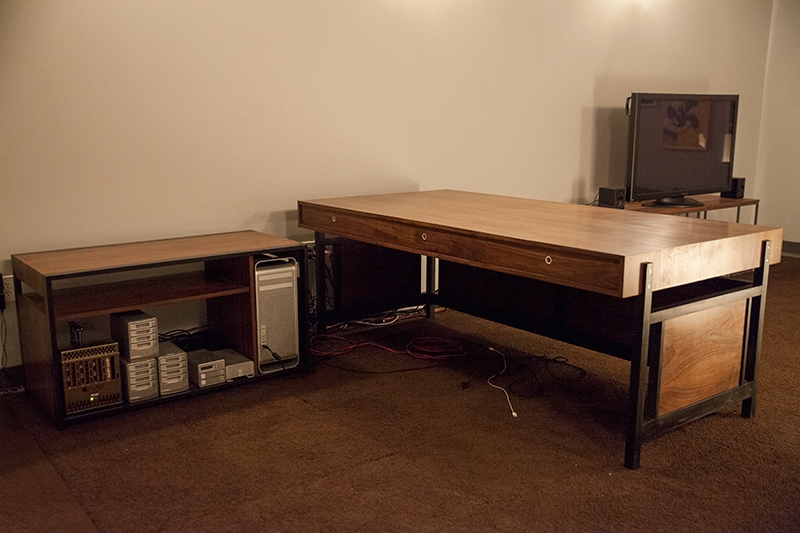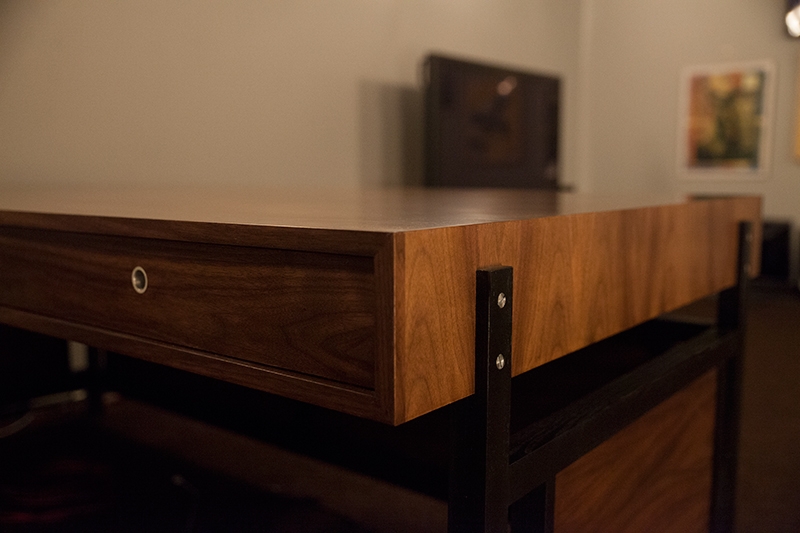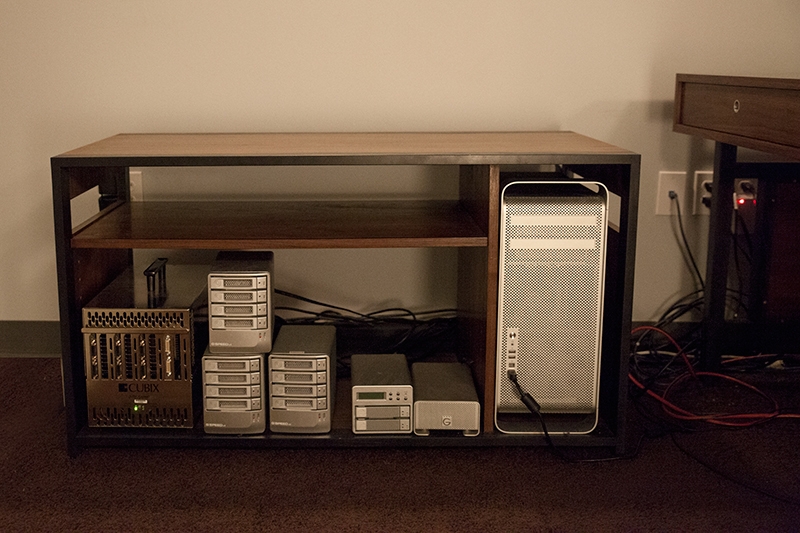
A colorist for film approached me to create a desk for him. A colorist is the person who adjust the color in a film frame by frame to make sure that everything is consistent and there are no sudden changes. Because of the way that light affects how your eye sees colors, he works in a pitch black room with a single light source that has the correct light frequencies. He also has clients come to his studio so he can show them what he’s working on so the desk also had to look presentable to clients from every direction. Another design requirement was that the desk had to support all of his big monitors and his editing gear.
We came up with using walnut because it’s a dark tone wood and the tone blends into the darkness when all the lights are off. The top also had to be large enough to hold all his editing equipment without it taking up the entire room. Since there are clients in there frequently while he’s editing, we included a modesty panel to keep the area looking clean. The attention needs to be on the big screen, not the mess under the desk. To make the desk not feel like a huge heavy mass, I included cutouts in the modesty panel where it meets the frame.
The desk form is simple, and we wanted it to look nice, but not be the source of attention. To add a touch of sophistication and craftsmanship, the details are what shine through from the inlaid metal drawer pull to the stainless steel steel holding the desk top to the frame. The cutouts for wire management also adds appeal to the whole desk where everything is thought out ahead of time, rather just some hole with an off the shelf grommet.
Editing a film takes a lot of computer power and storage power, so we needed a place to store all his other equipment as well. We went with an open from cabinet for maximum air circulation that showcased his equipment rather than hiding it. The side cabinet mimics the desk design so it looks like a set.



